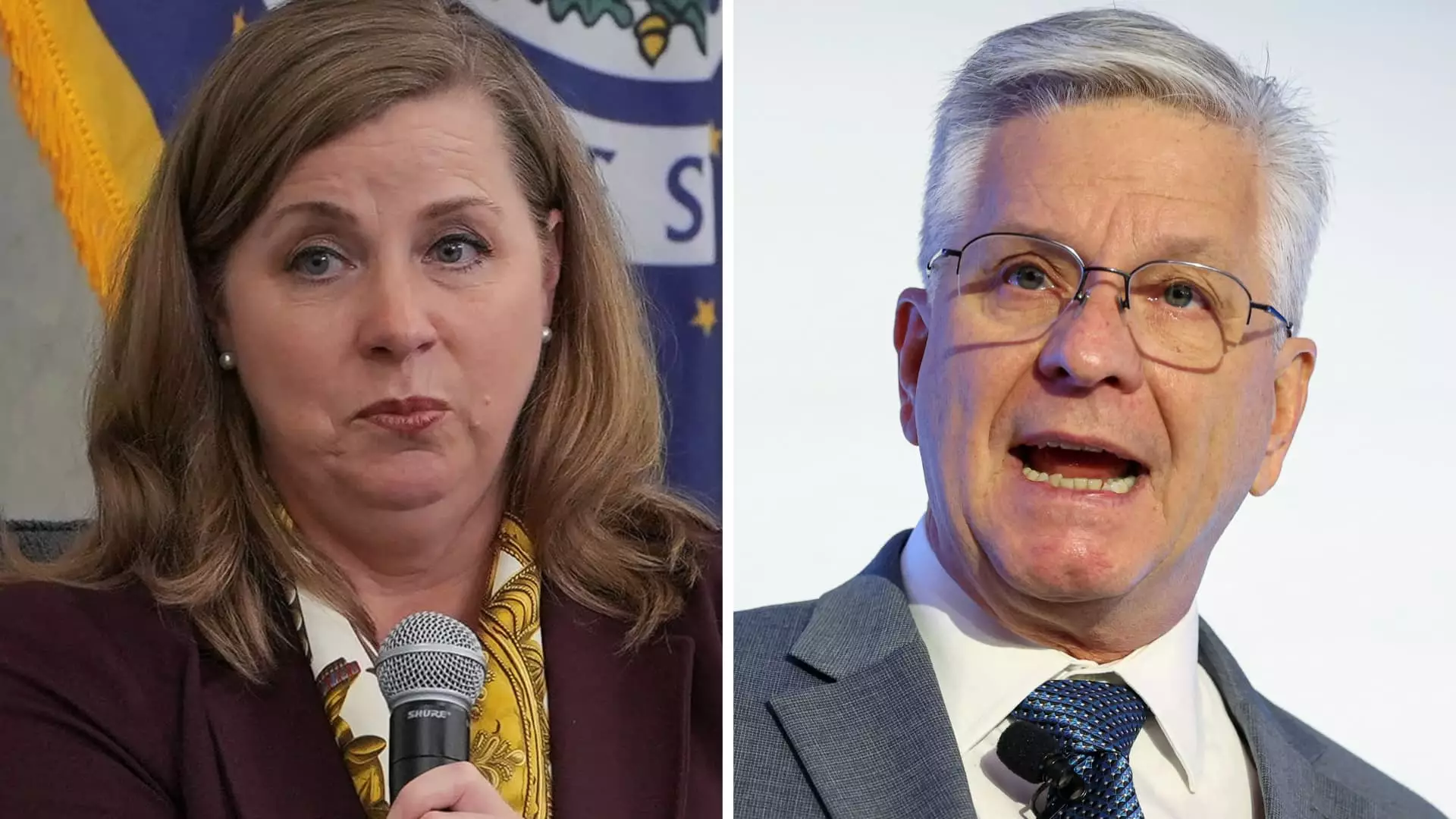In recent days, the Federal Reserve’s decision to maintain interest rates has ignited an unusual internal debate, revealing cracks in what many considered a unified front. For the first time since 1993, two influential governors—Christopher Waller and Michelle Bowman—publicly dissented from the collective vote to hold rates steady. Their opposition stems from a belief that delaying easing measures risks economic stability, especially as labor market data shows signs of decline. Their dissent signals a more hawkish stance within the Fed, emphasizing the importance of preemptive action over cautious hesitation.
This internal divergence underscores a broader philosophical debate about how best to interpret incoming economic data. While the majority places trust in a conservative wait-and-see approach, Waller and Bowman argue that such patience may be costly. They see the rising threats to employment as serious enough to warrant targeted rate reductions—something around a quarter percentage point—to ward off further deterioration. The discord reveals a central tension: should policymakers prioritize stabilizing growth now, or gamble on future data that might suggest inflation or unemployment are worsening? Both individuals tend to lean toward more proactive measures, despite the Fed’s overall caution, suggesting a shift in thinking among some officials who believe the economy is more vulnerable than the consensus acknowledges.
Tariffs and Inflation: An Overblown Concern?
A central theme of these dissenting voices is the impact of tariffs introduced during the Trump administration. Waller and Bowman contend that tariffs have only exerted a temporary inflationary effect—perhaps a modest bump rather than a persistent problem. They point out that without tariff influence, core inflation metrics would be closer to the Fed’s 2% target, which undermines the narrative that tariffs are a significant obstacle to price stability.
This perspective challenges the widespread anxiety about inflation spiraling out of control. It suggests that fears of a wage-price spiral fueled by tariffs are overstated and that the economy has resilience enough to digest such shocks without immediate aggressive policy action. Both officials favor a gradual easing approach—Waller suggests cuts up to 1.5 percentage points—aiming to avoid creating unnecessary turbulence or stifling recovery efforts. They see the current pause as a missed opportunity to adjust policies proactively, which could otherwise prepare the economy better for potential downturns or labor market shocks.
Their stance also raises questions about how policymakers interpret transient inflation data. Is the temporary surge due to tariffs truly a threat that warrants prolonged inaction, or is it simply a blip that will fade as supply chains adjust? Waller and Bowman lean towards the latter view, emphasizing the importance of not overreacting to short-term fluctuations.
Political Pressure and the Federal Reserve’s Independence
The interventions by former President Donald Trump and his current criticisms of the Fed reveal a delicate political environment surrounding monetary policy. Trump’s call for substantial rate cuts—up to 3 percentage points—reflects his desire for aggressive easing to boost economic growth, but such moves risk undermining the Fed’s independence. His public demands can influence market perceptions and policymaker calculations, creating an environment where political pressure could skew monetary decisions towards short-term gains rather than long-term stability.
The tension here is palpable: central bank officials must balance economic data, political pressures, and their own judgment. Waller and Bowman’s cautious stance suggests they prioritize responsible, data-driven policy over reactive measures influenced by political winds. Their dissent indicates a preference for gradual adjustments, which aligns well with center-right liberal principles—favoring market stability, fiscal responsibility, and a cautious but steady approach to economic management.
Furthermore, their focus on the potential risks to the labor market highlights a pragmatic acknowledgment that economic resilience depends on maintaining employment levels. Excessive rate cuts based on politically motivated narratives could undermine this goal, leading to unintended consequences like rampant inflation or financial instability. Their cautious approach makes sense within a framework that advocates for balanced growth—not reckless stimulus or austerity, but prudent moderation.
The Future of US Monetary Policy in a Changing World
The debate within the Fed exemplifies the challenges faced by central banks in a complex, interconnected world. Tariffs, geopolitical tensions, and fluctuating global markets add layers of uncertainty to domestic economic management. While Trump’s aggressive stance highlights political influences, the dissents from Waller and Bowman reflect a more nuanced, risk-aware outlook.
The question remains: will the Fed lean into gradual easing to foster sustainable growth, or will political pressures force a more aggressive approach that could jeopardize long-term stability? The odds favor a measured, balanced policy that recognizes both the opportunities and threats inherent in today’s economic environment. Such an approach aligns well with center-right liberal economic principles—supporting growth and employment while safeguarding against inflation and systemic risk.

